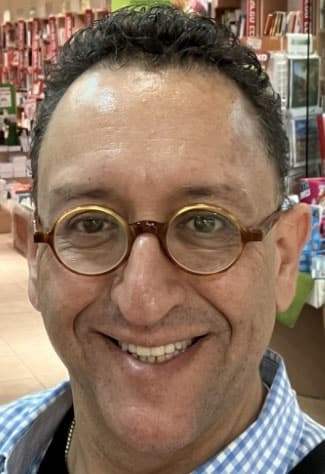Â
A book’s opening chapter is crucial to setting the mood and aura for the remainder of the book’s journey. Likewise, the opening scene of a film usually helps set the tone for what will ensue.
The Passover seder is both a reader’s experience and a moviegoer’s. We sit around the table and read the haggadah, and we also witness a host of rituals. But how does the seder leader creatively capture an audience and draw it into the experience from the beginning?
My father is neither novelist nor screenwriter, but from childhood he exposed me to a Moroccan seder ritual that immediately drew all those around the table into the full experience of a seder. This ritual is affectionately known amongst Moroccans as Bibhilu.
Following the kiddush, the karpas, and the yahatz (division of the matzah), the leader takes the brass seder plate, adorned with all of the ritual items, and he begins to walk around the table, waving the seder plate over each person’s head. As the plate is being waved, the entire gathering at the seder chants in unison: “Bibhilu yatsanu mimitsrayim” (“In a hurry we left Egypt”). When my father did this, each of us wondered whether he would simply wave the plate above our heads or knock us over the head with it. This ritual created lots of positive energy — between the anticipation of your turn under the plate and the chanting in unison of Bibhilu.
Yes, it’s a lot of fun. But is there a deeper spiritual meaning, or is this ritual simply some gimmick meant to create excitement among those who might be otherwise bored?
Throughout my life, I have always celebrated the seder in Moroccan fashion, Bibhilu and all. But only a few years ago did I first see a Moroccan haggadah.
At the beginning, there was, as in all haggadot, a drawing of the seder plate, illustrating the placement of each ritual item, which generally followed the Sephardic tradition. I had always known that Sephardic Jews arrange the seder plate differently than Ashkenazim, but again, I never knew why.
The Sephardic pattern, I knew, derives from tradition attributed to the great kabbalist from Safed known as the Ari (Rabbi Isaac Luria). In this haggadah, the drawing not only reflected the Ari’s Sephardic arrangement, but it added something that I had never seen, something which suddenly tied together for me the logic behind the Sephardic arrangement, and the reason behind the Moroccan Bibhilu ritual. Next to each ritual item on the plate was written one of the 10 kabbalistic sefirot, the mystical dimensions describing the sacred attributes of God. The three matzahs correspond to keter (crown), chochmah (wisdom) and binah (understanding); the shank bone corresponds to hesed (kindness); the egg corresponds to gevurah (strength); the bitter herbs correspond to tiferet (beauty); the charoset corresponds to netzach (victory), the karpas corresponds to hod (splendor), the hazeret corresponds to yesod (foundation); and the seder plate itself represents malchut (kingship).
It suddenly dawned upon me that, with this mystical arrangement, the seder plate is no longer just a platter carrying a selection of ritual items. The Ari’s Sephardic arrangement transformed the seder plate into a sacred representation of God, which means that when the seder plate is waved above your head during Bibhilu, you are being blessed by the spiritual strength of the Shekhina. The body of God, as represented by the sefirot, is now being waved above your head, and for the rest of the evening, the presence of the seder plate on the table represents the presence of the Shekhina in your midst.
From then on the Bibhilu ritual suddenly meant a lot more to me, because I now understood that, in addition to drawing in the audience, the Bibhilu ritual also represented a spiritual blessing for each participant as he or she prepares to set off on the haggadah’s storytelling journey from slavery to freedom.
As an American Jew raised in a Moroccan Jewish home, the Bibhilu ritual will always be part of my life. Having experienced it from childhood, and now coming full circle to understand its meaning, I will always look at the seder plate as a source of blessing and sanctity throughout the evening. Whether you are Moroccan or not, this ritual can become a powerful way to help infuse your seder with a newfound spiritual depth.
As it turns out, my father is now in a wheelchair, so he has transferred this privilege and responsibility to me. And yes, after all of those years under the seder plate, it’s lots of fun banging my father over the head while we all chant Bibhilu.
Daniel Bouskila is rabbi at Sephardic Temple Tifereth Israel.
Â





















 More news and opinions than at a Shabbat dinner, right in your inbox.
More news and opinions than at a Shabbat dinner, right in your inbox.